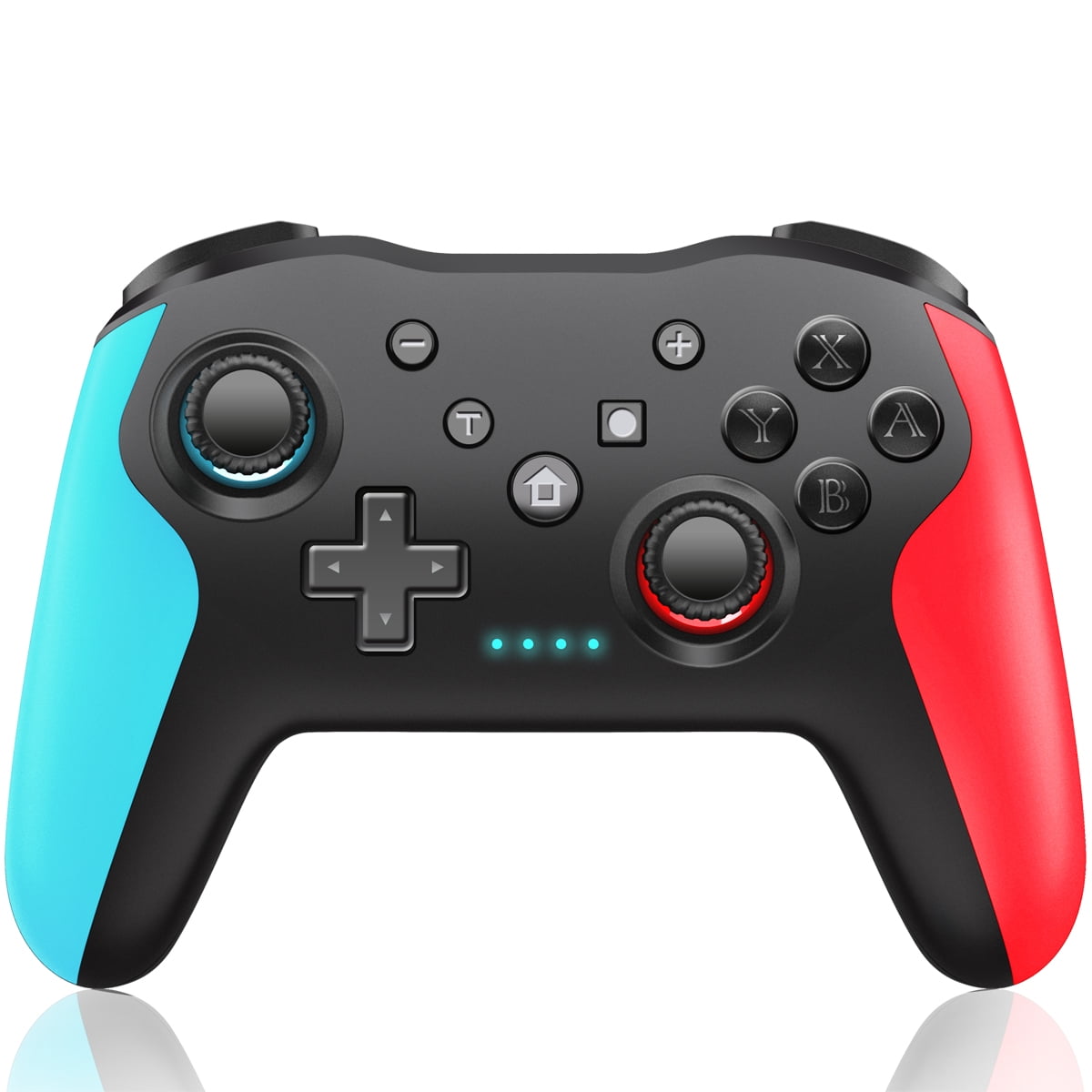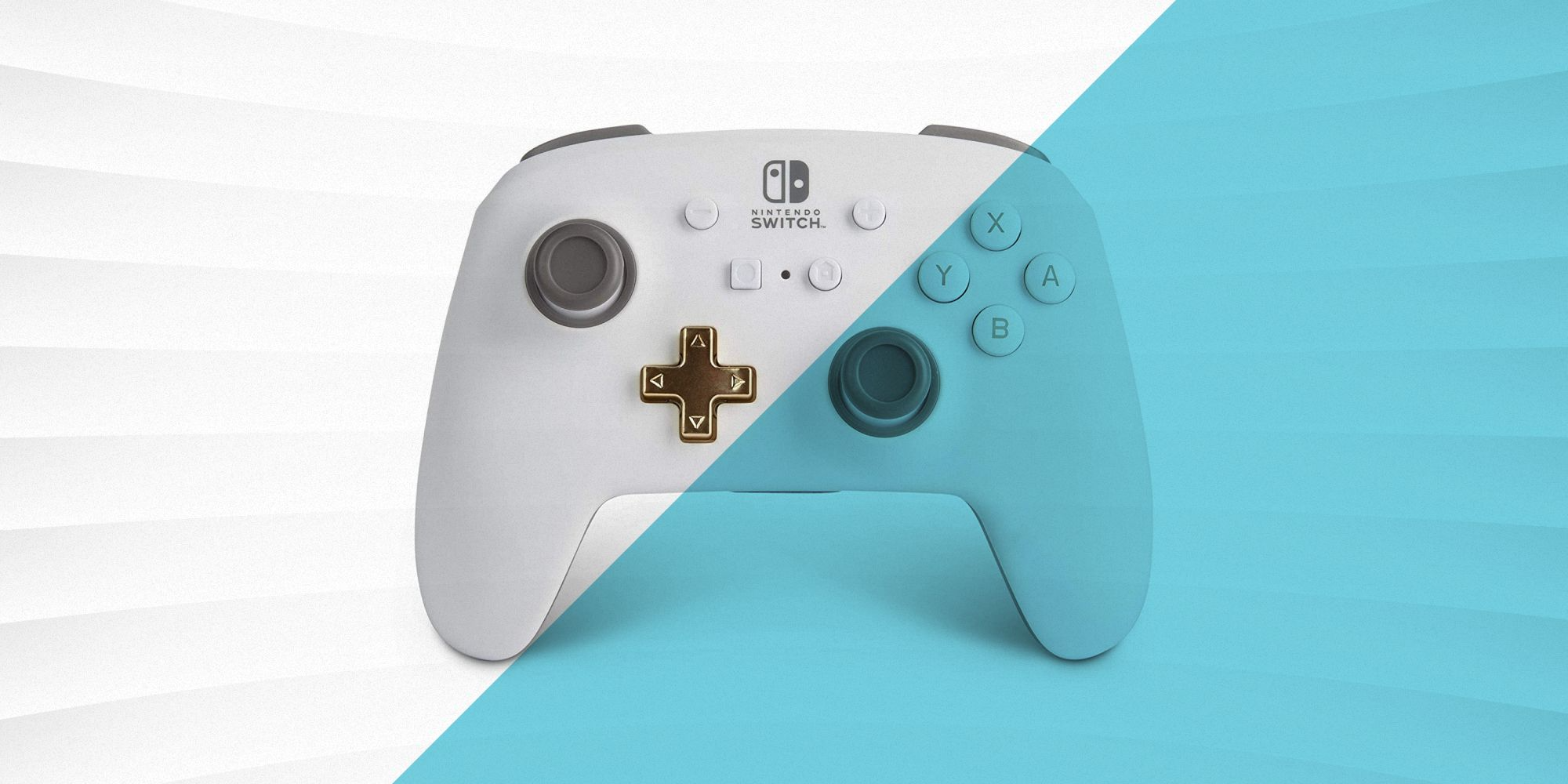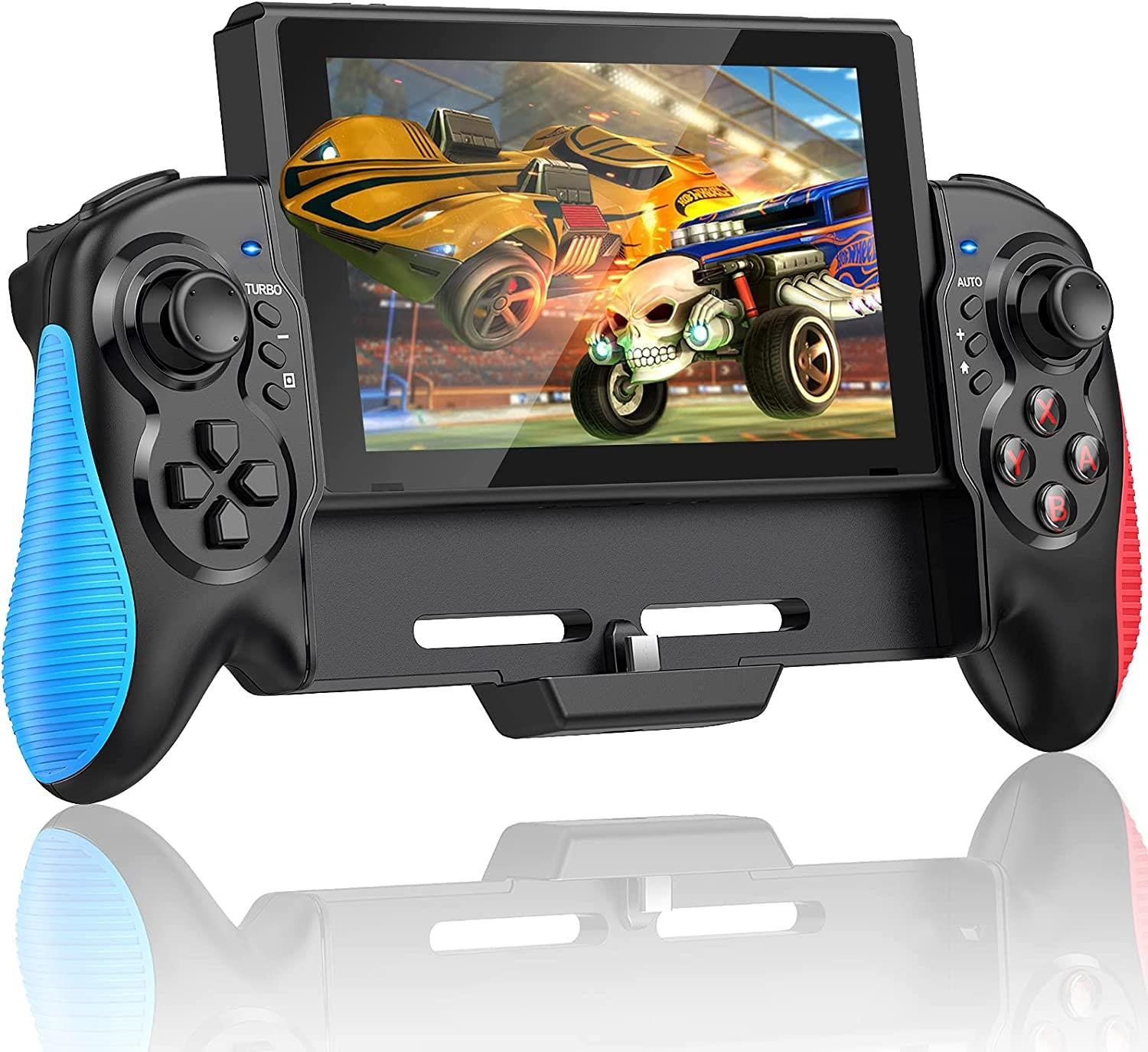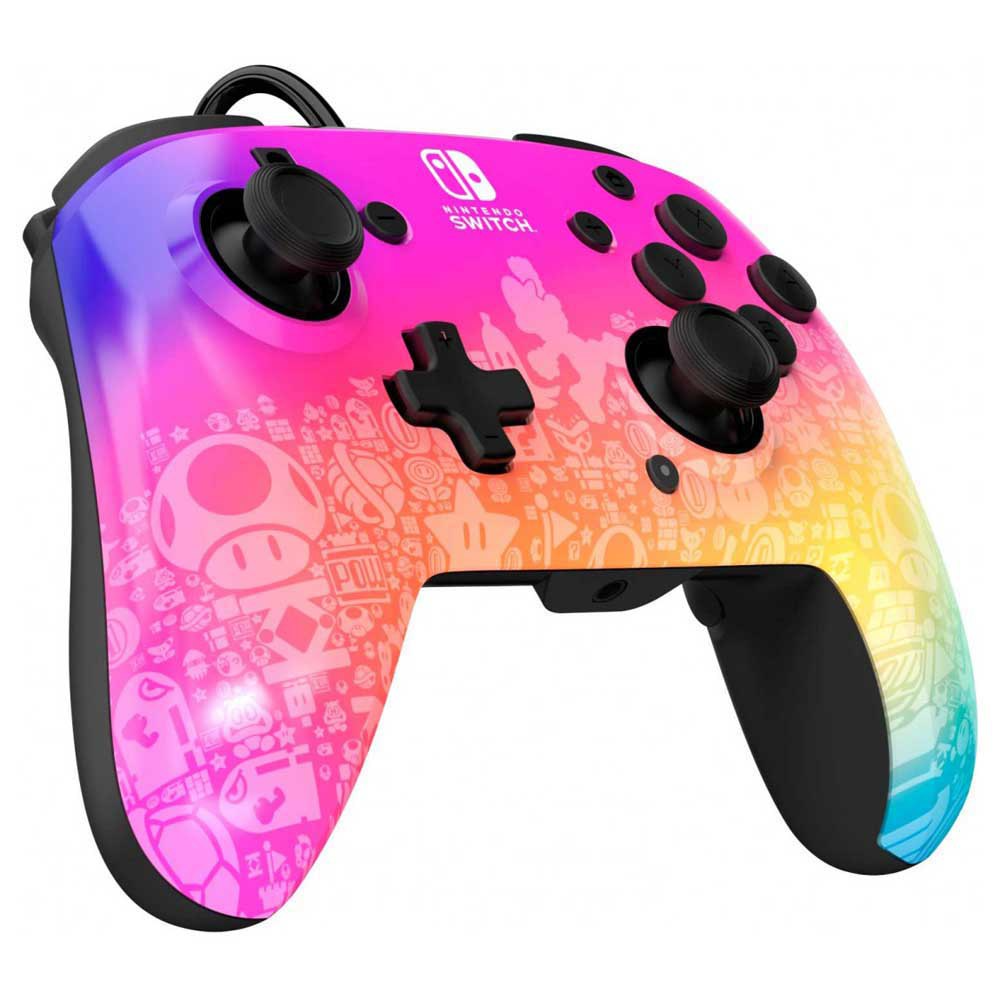Introduction
The Nintendo Switch has revolutionized the gaming landscape since its release in 2017, offering players an unprecedented blend of versatility, innovation, and immersive gameplay experiences. At the heart of this groundbreaking console lies its versatile controller – the Joy-Con – which serves as the primary interface between gamers and the rich digital worlds they explore. This comprehensive article delves into the various aspects of the Nintendo Switch controller, examining its innovative design, functionality, customization options, and compatibility with other devices, ultimately demonstrating why it stands as a pivotal component in the Switch’s continued success and popularity.
Innovative Design: Form Meets Function
The Nintendo Switch controller, known as the Joy-Con, is a testament to the company’s commitment to pushing boundaries and redefining traditional gaming conventions. Each Joy-Con is a compact, wireless controller that can function independently or be attached to the main console or the Joy-Con grip, allowing for seamless transitions between handheld, tabletop, and TV modes. This modular design not only caters to diverse playstyles and environments but also fosters social gaming experiences by enabling multiplayer sessions with minimal equipment.
The Joy-Con’s ergonomic form factor ensures a comfortable grip for extended gaming sessions, while its lightweight construction makes it easy to handle, especially when detached for motion-controlled games or multiplayer fun. Each controller houses an analog stick, four face buttons (A, B, X, Y), two shoulder buttons (L, R), and a plus/minus button cluster, providing a familiar layout for gamers accustomed to conventional controllers. Additionally, the inclusion of HD Rumble technology delivers precise, nuanced haptic feedback, enhancing immersion by simulating various sensations, from the jingle of coins to the feel of virtual objects within the game.
Advanced Functionality: Beyond Traditional Controls
The Joy-Con goes beyond traditional controller features by incorporating cutting-edge technologies that broaden the scope of gameplay possibilities. One such innovation is the built-in motion sensors, including an accelerometer and gyroscope, which enable highly accurate motion controls reminiscent of the Wii era. These sensors facilitate intuitive interactions in games like “1-2-Switch,” “Fitness Boxing,” and “Super Mario Party,” where physical gestures translate directly into on-screen actions.
Another standout feature is the IR Motion Camera found in the right Joy-Con. This camera detects the distance, shape, and movement of nearby objects, introducing unique gameplay mechanics in titles like “Mario Kart Live: Home Circuit” and “Ring Fit Adventure.” The capacitive touchpads located on each Joy-Con’s inner face further expand control options, allowing for swipes and taps akin to touchscreen devices in compatible games.
Customization and Accessibility
Nintendo understands the importance of personalization and accessibility in gaming, and the Joy-Con offers numerous ways for users to tailor their experience to their preferences. Players can choose from a wide array of vibrant colors and special edition designs, allowing them to express their individuality through their controllers. Moreover, the modular nature of the Joy-Con enables mix-and-match color combinations, fostering creativity and customization.
In terms of accessibility, the Nintendo Switch supports various controller configurations to accommodate different needs and playstyles. Gamers can use a single Joy-Con as a mini-controller, attach both to the Joy-Con grip for a more traditional feel, or invest in the Nintendo Switch Pro Controller for an enhanced, ergonomic experience. The system also offers extensive button remapping options through the accessibility settings, empowering users to customize control schemes according to their comfort and convenience.
Expanding Horizons: Compatibility with Other Devices
In today’s interconnected world, where technology plays an integral role in our daily lives, ensuring compatibility between various devices is essential for seamless user experiences and optimal functionality. This article explores the importance of compatibility across different devices, the challenges it presents, and strategies to achieve a harmonious ecosystem where devices can communicate and work together effectively.
The Importance of Device Compatibility
Interoperability and Seamless Integration
Compatibility enables devices from different manufacturers or operating systems to communicate and exchange data without hiccups. This interoperability allows users to effortlessly connect their smartphones, laptops, smart home devices, wearables, and other gadgets, creating a cohesive digital ecosystem.
Enhanced User Experience
When devices are compatible, users enjoy a smooth and unified experience across platforms, eliminating the need for manual data transfers or dealing with incompatibility issues. For instance, starting a task on one device and seamlessly continuing it on another, or controlling multiple smart home appliances from a single interface, greatly enhances convenience and productivity.
Flexibility and Choice
Compatibility empowers consumers to choose products based on their preferences, rather than being restricted by proprietary systems or limited compatibility options. This promotes competition, drives innovation, and ensures that users have access to a diverse range of high-quality devices and services.
Cost Efficiency
Investing in devices that can integrate well with existing hardware and software reduces the need for costly replacements or additional adapters. It also minimizes the learning curve associated with adopting new technologies, as users can leverage their existing knowledge and skills across multiple devices.
Challenges in Achieving Device Compatibility
Diverse Operating Systems and Protocols
The presence of multiple operating systems (e.g., iOS, Android, Windows) and communication protocols creates inherent barriers to compatibility. Each platform has its own set of standards, APIs, and security requirements, making it challenging for developers to ensure seamless cross-platform integration.
Fragmented Ecosystems
Some manufacturers intentionally create closed ecosystems to lock users into their product lines, limiting compatibility with third-party devices. This approach may provide a more streamlined experience within the ecosystem but hampers compatibility with devices from other brands.
Rapid Technological Evolution
The fast-paced nature of technological advancements means that new devices and features are constantly emerging. Ensuring compatibility between these cutting-edge technologies and older devices can be difficult, especially when considering factors like hardware limitations, software updates, and security concerns.
Strategies for Enhancing Device Compatibility
Adoption of Open Standards and Interoperability Frameworks
Encouraging the use of open standards and industry-wide interoperability frameworks, such as Bluetooth, Wi-Fi, USB-C, and cross-platform development tools like React Native or Flutter, helps ensure that devices from different manufacturers can communicate effectively.
Collaboration Between Industry Players
Tech giants, manufacturers, and standard-setting organizations should collaborate to establish common guidelines, protocols, and certification programs that promote compatibility and ease the burden on developers. Initiatives like the Open Connectivity Foundation (OCF) and the Internet of Things Consortium (IoTC) aim to foster collaboration and drive industry-wide compatibility standards.
User-Centric Design and Flexibility
Designing products with compatibility in mind, offering compatibility modes or adapters, and providing clear compatibility information to consumers can help alleviate compatibility issues. Additionally, embracing modular designs and upgradable components can extend the lifespan of devices and facilitate compatibility with future technologies.
Regulatory Intervention
Governments and regulatory bodies can play a role in promoting compatibility by setting mandatory standards, enforcing interoperability requirements, and discouraging anti-competitive practices that hinder compatibility. For example, the European Union’s Radio Equipment Directive (RED) mandates certain levels of interoperability for radio equipment.
Continuous Software Updates and Support
Manufacturers should commit to providing regular software updates and support for their devices, ensuring compatibility with the latest operating systems, security patches, and third-party applications. This not only enhances compatibility but also maintains the overall security and performance of the device ecosystem.
Conclusion
The Nintendo Switch controller, the Joy-Con, exemplifies the console’s innovative spirit and commitment to delivering unparalleled gaming experiences. Its modular design, advanced functionality, extensive customization options, and compatibility with various devices make it a cornerstone of the Switch’s success, transcending traditional controller limitations and redefining how we interact with digital worlds. As the gaming landscape continues to evolve, the Joy-Con stands as a shining example of Nintendo’s ability to pioneer new frontiers in gameplay, ensuring that the thrill of adventure remains ever within reach, no matter the setting or playstyle.





